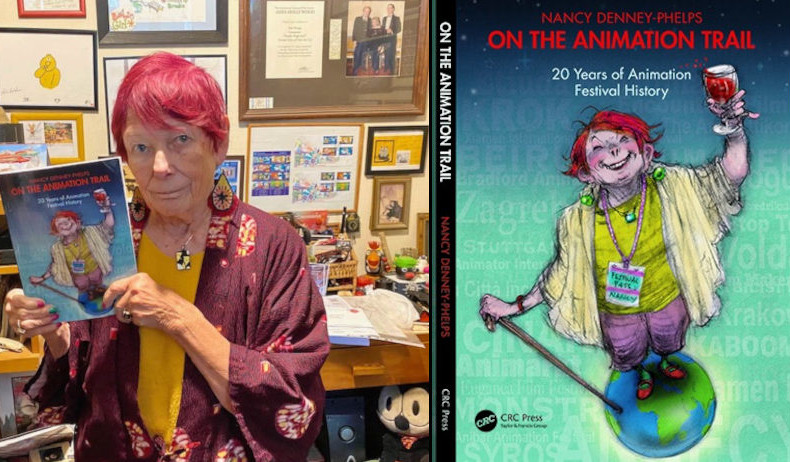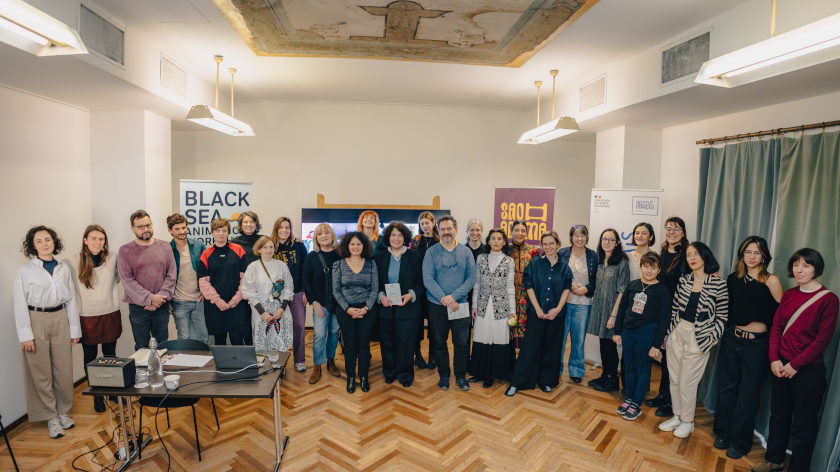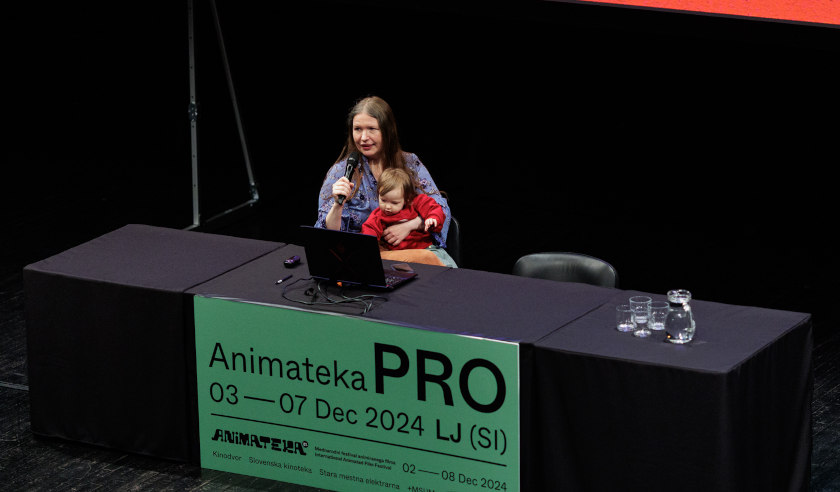In Absolution of Puppets on Ideological Fronts: Review of ‘Chinese Animated Film and Ideology, 1940s-1970s: Fighting Puppets’ by Olga Bobrowska
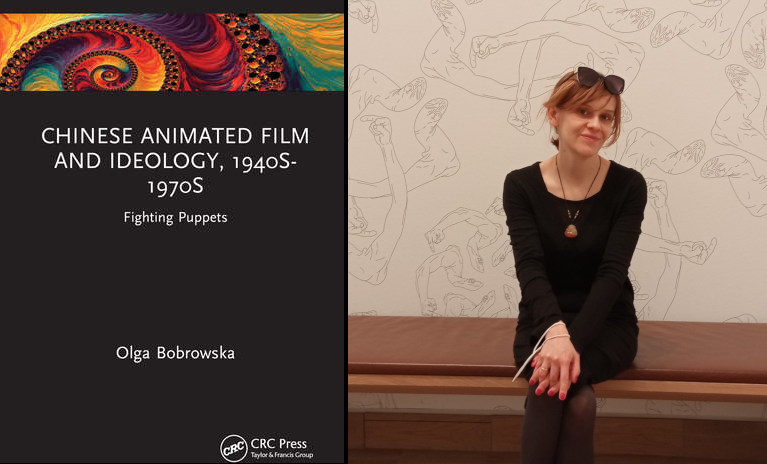
In our neck of the woods – i.e. animation history/theory grove amidst the film studies taiga – there are not too much of standing alone trees – i.e. books of singular substance – to miss the forest for them. Still, individual growth would matter and deserves accounting for.
Olga Bobrowska’s work, ‘Chinese Animated Film and Ideology, 1940s-1970s: Fighting Puppets’ (CRC Press, Taylor & Francis Group, Boca Raton, London, New York, 2023) appeared within the series Focus of CRC Press which had been initiated a few years back, under the editorial aegis of the late Giannalberto Bendazzi who put down his own entries at first along with strong encouragement for others, including the present author; now it's supervised by Chris Robinson, with his writings in the lineup as well; and totals to 18 books by the moment, altogether of quite different themes and scope, even in terms of the very genre/discourse nature: from monographs on individual filmmakers to specific techniques or production facets overview, from historical research to free-flying critical essays, to personalized introspections, in interviews and biographical accounts. Against such a general backdrop, this book stands out here as arguably the most 'academic' study per se. Not by accident, really; it's, in part, derived from the author's dissertation (defended at Jagiellonian University, Krakow, Poland, in 2020); thoroughly revised and rewritten, for sure, but still bears the thesis traits, for better or worse. Quite deeply researched and painstakingly referenced, it's not exactly the easiest read; neither it thought to nor should be, however – due to its specific theme and inner focus as well in particular.
Olga Bobrowska is known for many as an involved observer, an attentive critic of the current animation scene; and an active actor on the festival field herself, a founder-director of her own StopTrik Fest, rather young, but well-established by now; a frequent juror and curator on a side, and so forth. Thus, her present hypostasis may come as a surprise for some; or hint to a certain dichotomy, possibly, as a matter of general discussion – since she is in fact a scholar not to a lesser degree; and had been diving bravely into these truly foreign waters for a decade already. With some language knowledge, she relied on a translator's help as well; traveled and researched locally.
Nevertheless, Bobrowska is well aware of her somewhat estranged, peculiar position here – and this even appears as one of the pointed issues/undercurrents in the narrative premise, and it is of important general significance, to my mind. Referencing the lines 'to the distant observer', from the opening to Noel Burch's classic study on Japanese cinema, she ‘per analogiam’ postulates quite unabatingly: "'Distant observation' requires realizing and accepting the limits of intercultural understanding" – up to recognizing that "the aim of presenting a fully exhaustive account of discussed phenomena lies beyond the 'observer's' capacities", maybe altogether (p. 16). Such a gesture of utter scholarly humility is actually a strong move: indicates an obligatory openness to throughout self-reflexivity – and for 'interdisciplinary mode', called for by the 'idiosyncratic nature' of the material, from broader cultural studies to political science, to anthropology (p. 17). Moreover so, the actual focus here is not exactly within the scope of film history proper in the conventional sense, or not only and mainly: “Majority of the animation study publications condense the problems of political history to the necessary ‘setting’, a background that allows anchoring the reflection on animation in time and space but rarely constitutes core reference of the presented analyses” (p. 29). That’s where Bobrowska boldly goes: into the rather unchartered terrain filling the gaping niche to concentrate on "an overtly ideologized animated film production" (p. 6) and attempting ultimately "to understand means and methods with which animated art may so explicitly and organically comply with the darkest summons of the ideological doctrine" (p. 109). A challenging journey, no doubt. On the way, she has to educate the reader on truly foreign matters, hardly embedded in lay folks' cultural memory, beyond selected/rare emblematic icons or slogans. And here we have to dwell on the intricacies of 'revolutionary struggle', in steps and eras; on campaigns and purges; and, firstly, on the core comrade Mao's 'teachings'-turned-orders, in their ever-changing dynamics – and Bobrowska traces relentlessly the non-stop-oscillating ‘party general line’, so that to chart the map of particular studio practices, personal destinies, and then the creative output, worthy of the name.
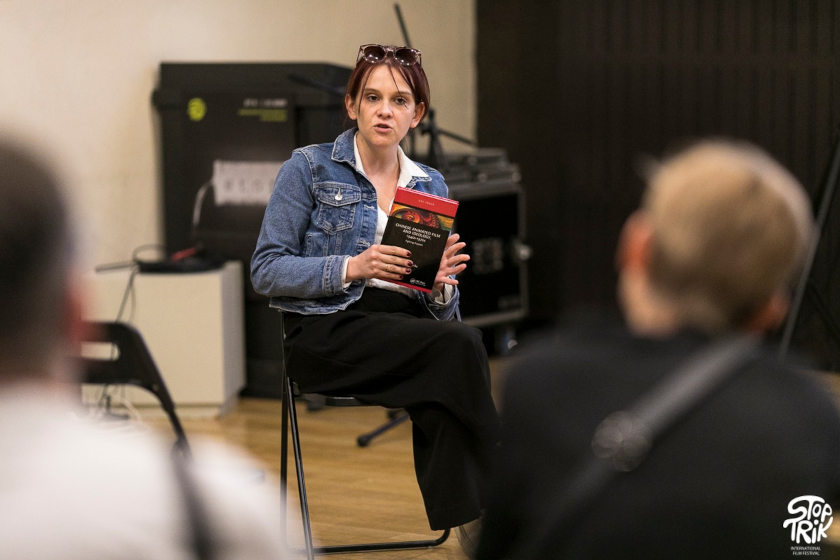
Olga Bobrowska during the StopTrik Festival 2023 book presentation (c) StopTrik Festival - Andrej Firm
In terms of industry overview – given all the historical-cultural conditionality of the term and field – Bobrowska concentrates mainly on one particular studio, central to many developments and indispensably important in many aspects, Shanghai Animation Film Studio, SAFS, its rich-turbulent history and practices. And out of its lineup through the decades under consideration she selects four principal films to build the entire narrative around, in corresponding chapters: Denouncing Chiang Kai-shek – ‘The Emperor’s Dream’ by Chen Bo’er (1947); Unity in Resistance – ‘Wanderings of Sanmao’ by Zhang Chaoqun (1958); “To Live is to Serve the People”– ‘Rooster Crows at Midnight’ (1964) and “Bombard the Headquarters” – ‘The Little 8th Route Army' (1973), both directed by You Lei. Each of those works can be, in part, certainly viewed as "an interesting exemplification of the Maoist culture production's inclination" to certain ways (p. 110); but they can also serve to highlight, if in complicated optics, the times and circumstances they were coming from and/or stand to represent. And the author is ready to go to length in building the narrow-tangible contexts of understanding in real-life historical details along with grand arcs of things and pure ideological schemes; so that we do get a chance to appreciate the caricature portraying the enemies in the old-initial battles, be that when "Chiang Kai-shek (KMT leader) meets with General George Marshall in order to make a wicked deal" (p. 63); or, at later stage – the ruthless youth of infamous revolutionary guard at the peak of 'cultural revolution'.
Storylines, plots per se – as most direct, primary means of propaganda discourse – naturally, come to the center of attention, being carefully retold and dissected in their origins and variations. More interestingly, and perhaps, importantly, though, – Bobrowska also makes an effort to describe, in rather big production-artistic detail, the filmic reality of those barely acceptable titles to make and prove her argument by illuminating the spatial organization and lighting, camera moves, and compositions, up to, say, color design, symbolically loaded, and such. Not everything in this respect might be equally convincing or enlightening to me but the very step deserves respectful attention (isn't it also a kind of restoring along the way the semi-forgotten already skills and modes of the profession…). On the more theorizing plane, she introduces notions-terms like 'image-idea' that would “bestow a concrete expression upon abstract political and social concepts” (p. 114); and traces those effects to the extreme, where “conventions of realism that open up for reflexiveness and nostalgia should be remolded into a romantic, revolutionary experience and turned into model realism which equalizes image and idea" (p. 121). Probably a useful analytical tool and certainly an intriguing consideration generally – that would've called for further deeper contemplation; maybe in a different place.
| Related: You're Overreacting? Animation and Censorship |
In terms of cinematic poetics proper, one of the most interesting observations to me would be of the surprising ‘devices of ideological emphasis’ (p. 138), like brief moments of immobilization: “The freeze frame effect that serves an understanding of the narrative and propaganda intentions of the film can be found in numerous scenes conveying a direct agitation” (p. 140). For the author, it’s linked to the ‘suppositionality of meaning’, in turn derived from traditional aesthetics and stage-opera conventions in particular. This is indeed a ‘specific kinetic strategy’ that goes against the very nature of the medium under the demands of ‘revolutionary art’ – which might in fact indicate its not-so-hidden ‘formalist drift’ as is argued on these pages (pp. 139-143).
Of course, such devices-effects would look all the more dramatic in puppet films (stop-motion by technical definition), as are all the ones on review. The choice to limit the research/book field of vision to this particular medium/type was defined and justified on many levels, I suppose, in part dictated probably just by the historical material at hand, and maybe the author’s special focus as curator-critic; and by the role of traditional art, even if to lesser extent, and broader cultural references like operatic scene and its place in the overall ‘ideological architecture’. In any case, undoubtedly: “Focus on a particular technique – in this case, the puppet film (mu’ou yingpian) – helps to trace ideologically motivated changes in aesthetics and rhetoric” (p. 6). With that, I might find myself not completely on the same wavelength with the esteemed colleague just in my feeling of the puppets as such: as inherently rich and unpredictable beings, that is cultural entities, always pregnant with hidden meaning of the second-third order and possibly explosive connotations – however forcefully you’d try to reduce them to mere function or have to take at the narrowest angle, in films "that thematize communist revolution" (p. 1). Yes, I understand the author's premise: "The presented research deliberately leaves the question of artistic values aside" (p. 29); and find this, yet another facet of scholarly humility appropriate and fruitful; still, cannot help my own ‘critical’ judgmental curiosity, if not occasional admiration, when watching even the crudest figures with inarticulate faces in be that just a clumsy motion, but of idiosyncratic energy anyway.
But that’s a matter for a special discussion, and probably of another book – which is clearly in order, and actually is already announced as forthcoming in the same series: ‘Classic Chinese Animated Film and Ideology. Tradition, Innovation, and Interculturality’ – and to which the present one can or should be considered a necessary introduction. As Olga Bobrowska had noted from the very beginning: while sharing the keen interest and admiration of the newest wave that is coming from China and acquiring “a high position in the canon of contemporary arts”, it is important to remember that “these new voices have not come out of nowhere. Formally and politically bold, these films seemed to evoke and twist certain specific traditions that were already present for many years in the Chinese animated cinema” (p. 2). An obvious inevitable lesson from historian to critic, even if embodied in one person. Well, personally, I’d be thankful for the reminder as well, as other colleagues around, no doubt.
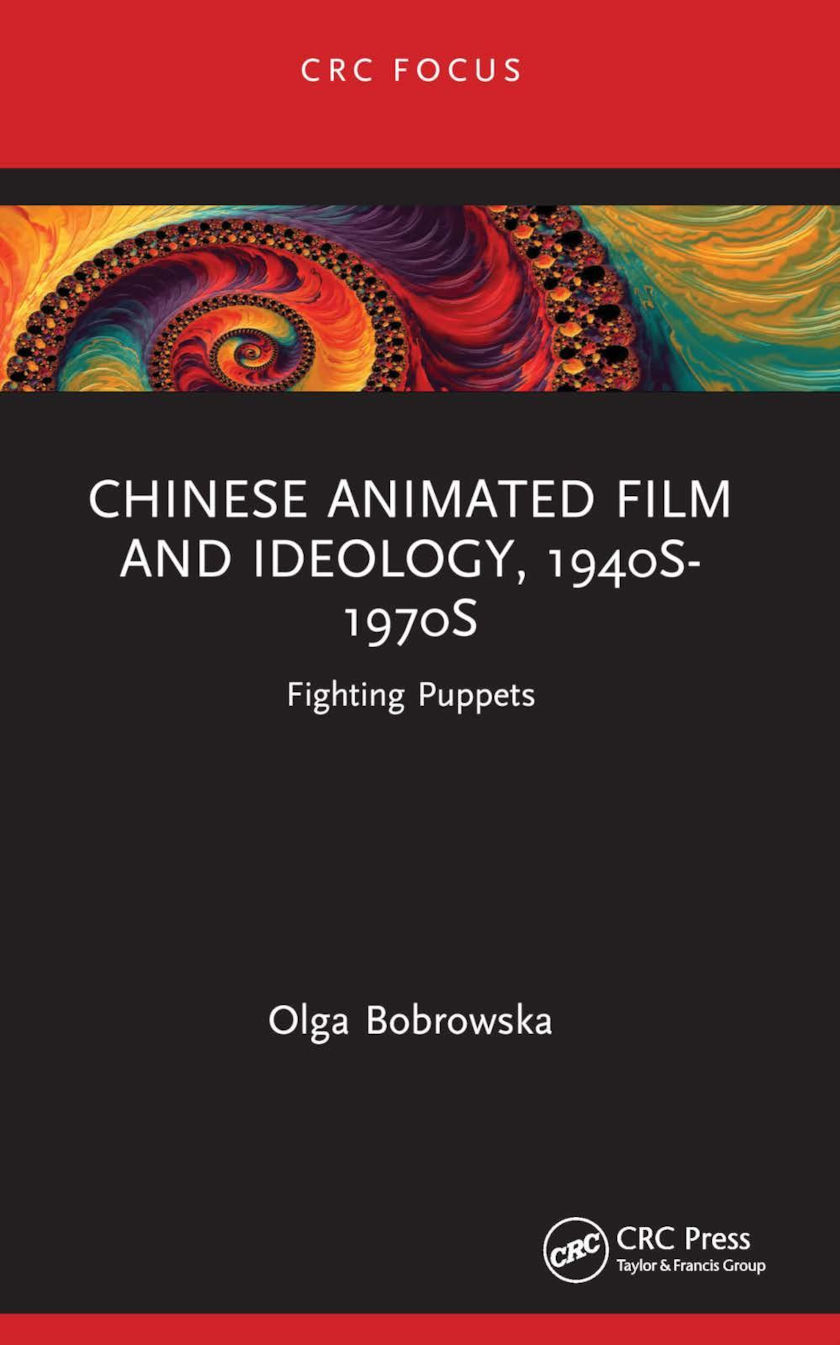
contributed by: Mikhail Gurevich




